.
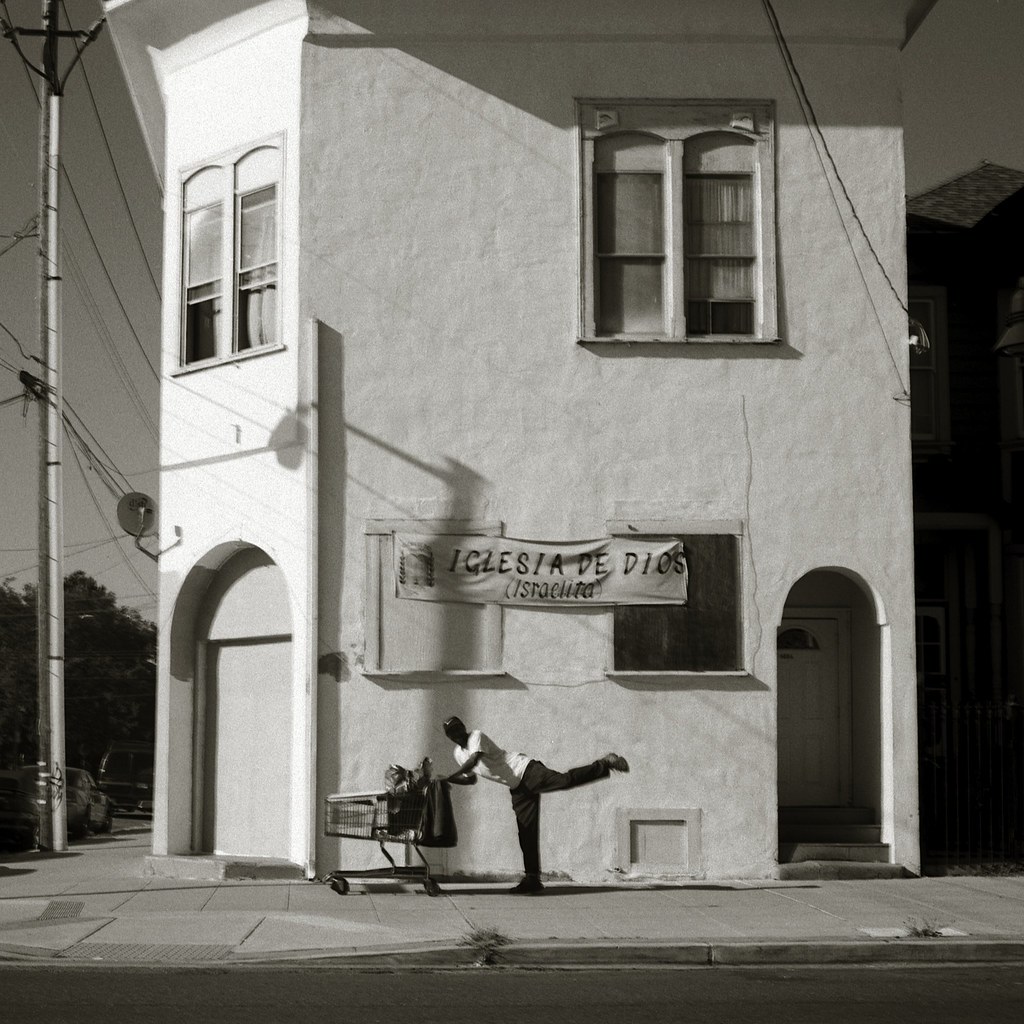
Iglesia de Dios (Israelita) (Oakland): photo by efo, 31 July 2012
Though
I'm really an agnostic, I see these churches as some of the last
holdouts of individualism and belief in a culture dominated by big
business. Each one is the product of someone's own personality and craft
-- often crude, but clearly heartfelt work.
Or to put it another way, each church itself is like another weird person on the street.
-- Efo, 2008
Or to put it another way, each church itself is like another weird person on the street.
-- Efo, 2008
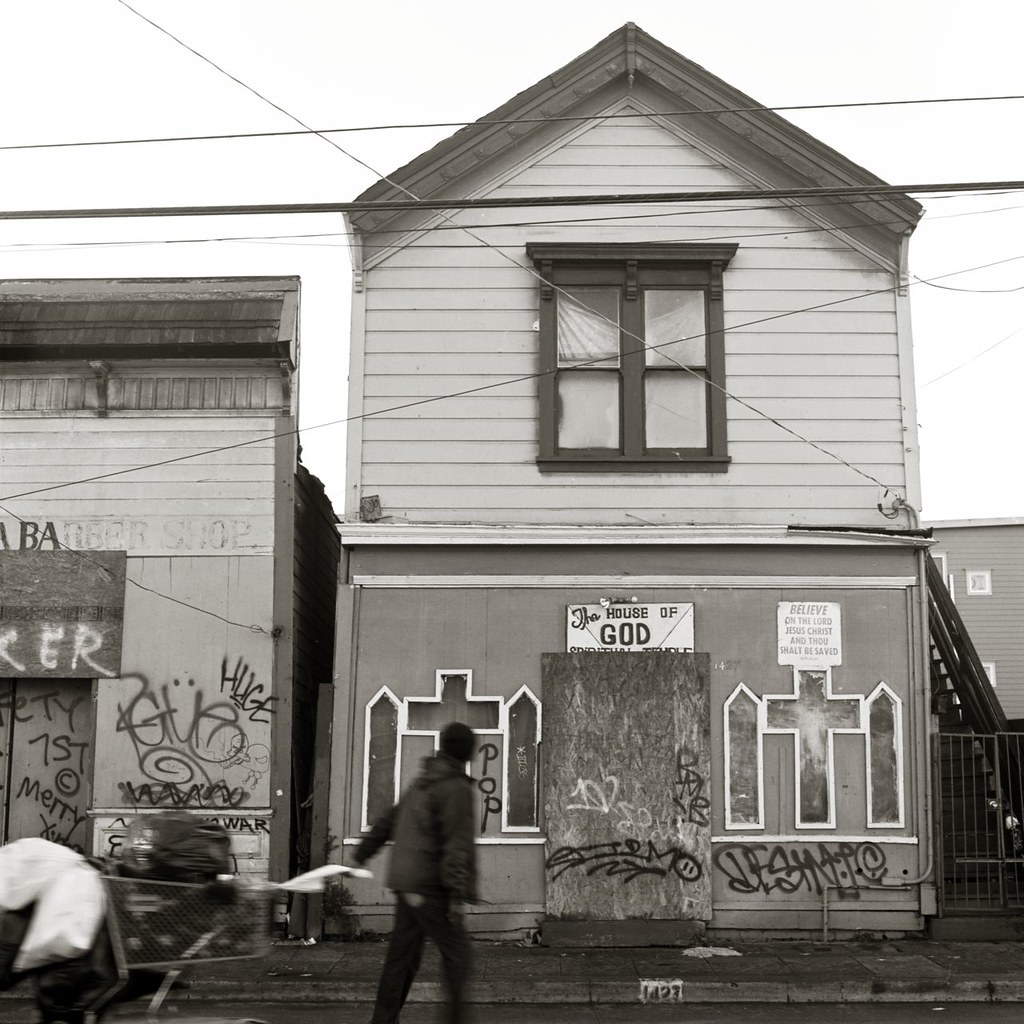
The House of God Spiritual Temple and passer-by with shopping cart (Peralta Villa, Oakland): photo by efo, 29 January 2008
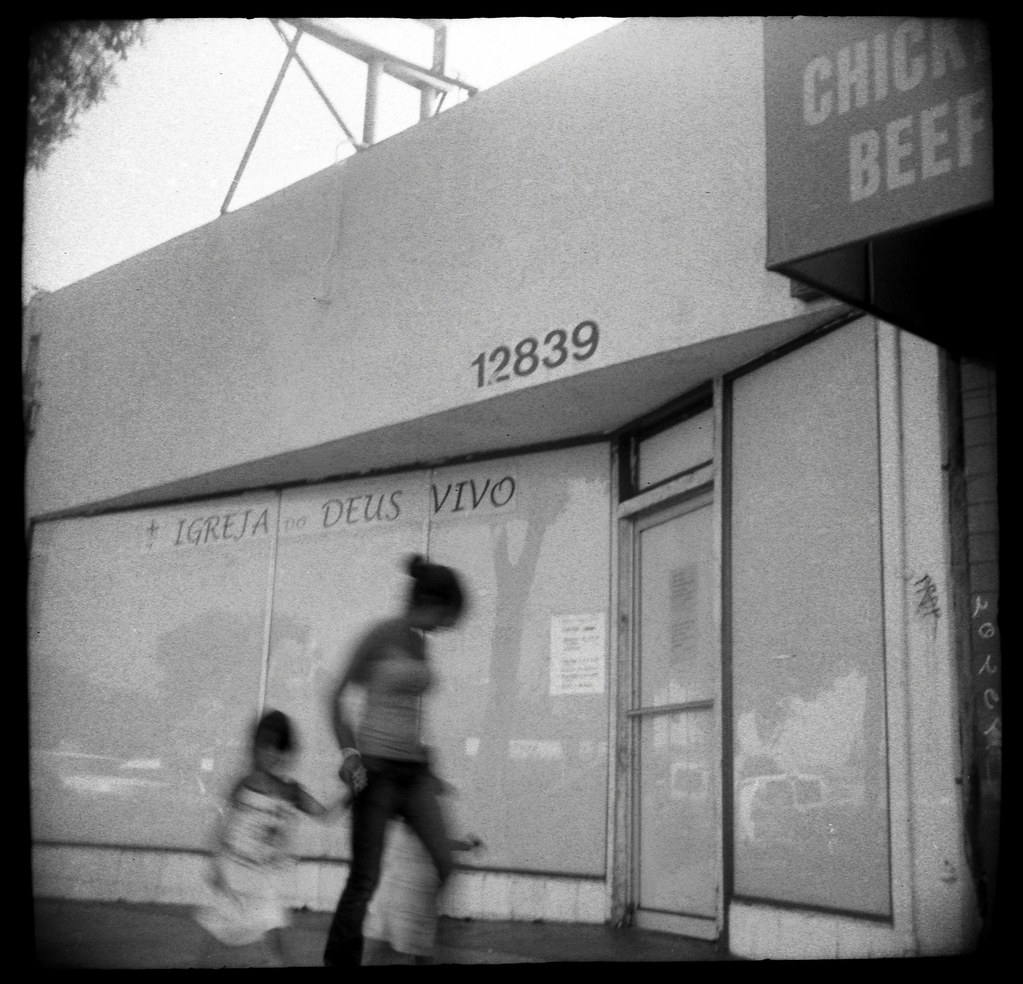
Igreja do Deus Vivo (San Pablo Avenue, Richmond): photo by efo, 20 July 2008

Templo El Calvario Cladic (Oakland): photo by efo, 28 December 2011
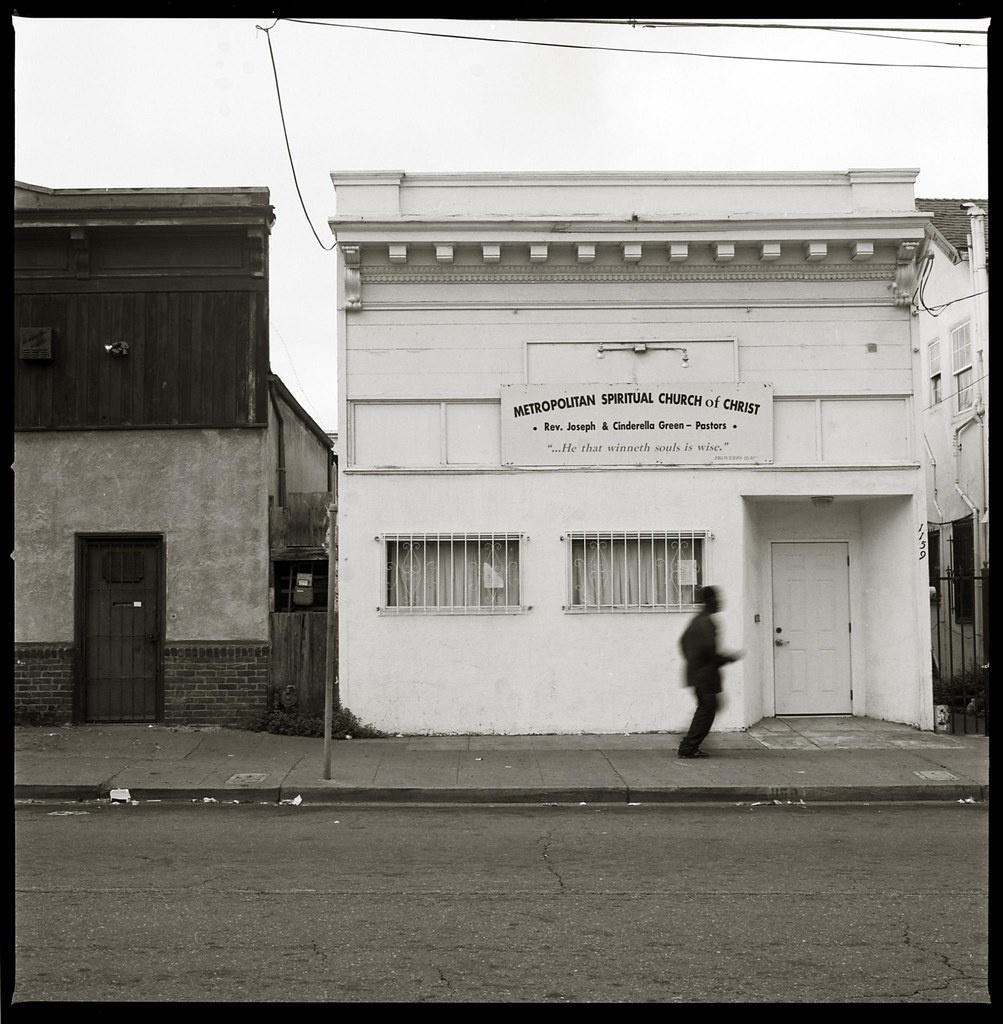
Metropolitan and Spiritual Church of Christ and passer-by (Hoover, Emeryville, California). A woman came by as I was taking this. "Black and white? Ghetto churches?" she asked. "Did you know that 90% of the pastors of these churches are ex-pimps?": photo by efo, 28 March 2010

Christ Union Missionary Baptist Church and passer-by (International Boulevard, Oakland): photo by efo, 26 January 2008
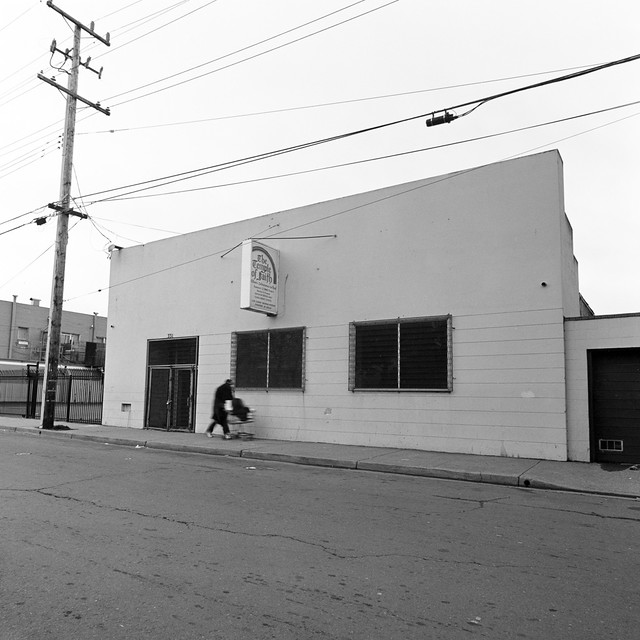
The Temple of Faith -- Where Deliverance Is Real -- and passer-by (Richmond): photo by efo, 10 February 2008
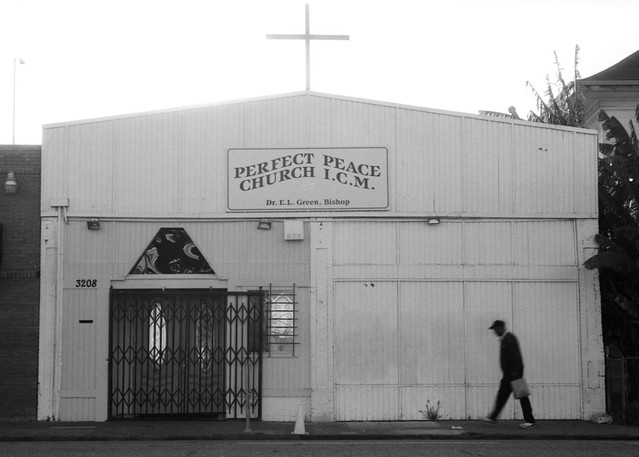
Perfect Peace Church with passer-by (Oakland): photo by efo, 27 March 2008
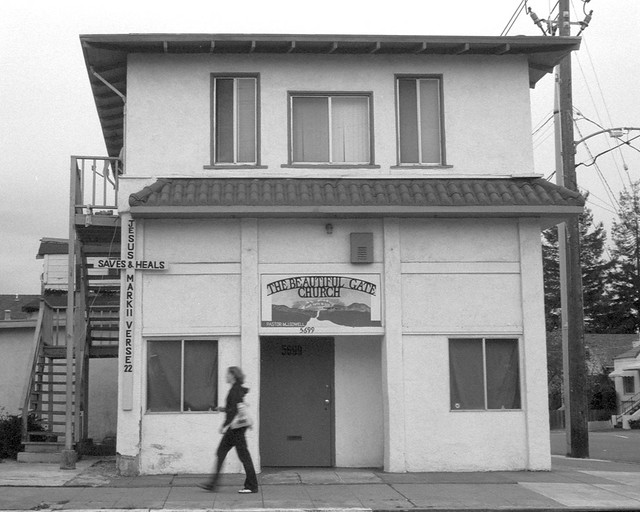
The Beautiful Gate Church and passer-by (Oakland): photo by efo, 2 March 2008

Allen Temple and passer-by No. 2 (South Oakland): photo by efo, 11 October 2009

Family Church of God in Christ and passer-by (Richmond): photo by efo, 1 March 2009

Church of the Living God and passer-by (Richmond): photo by efo, 18 October 2008
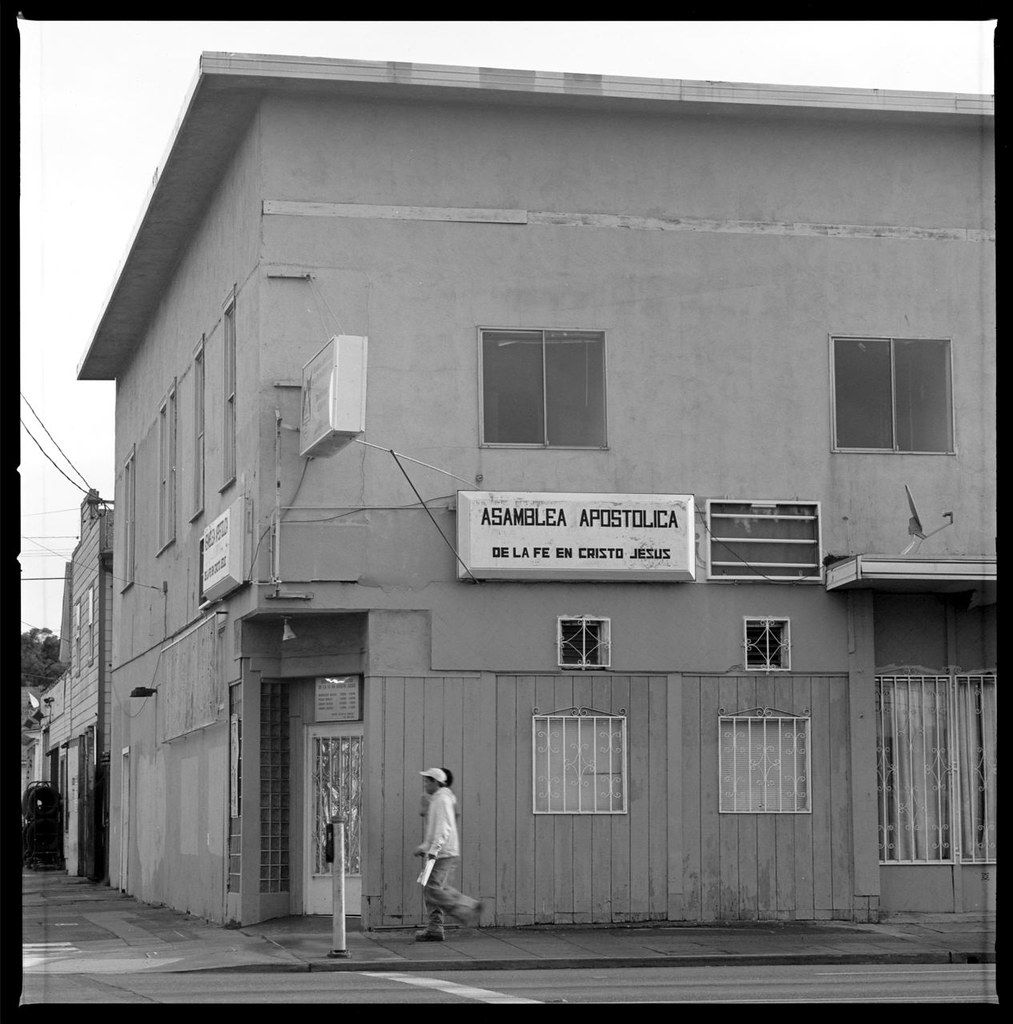
Asamblea Apostolica de la Fe en Cristo Jesus and passers-by (International Boulevard, Oakland): photo by efo, 27 January 2008
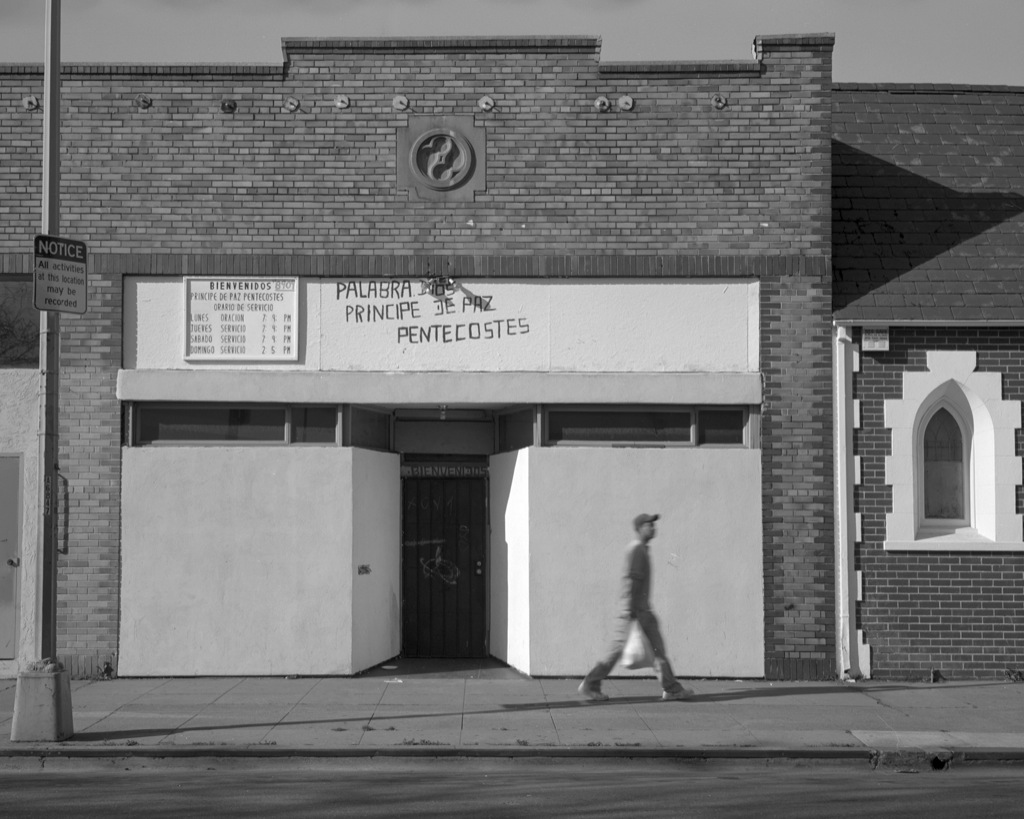
Palabra Dios Principe De Paz Pentecostes and passer-by (Oakland): photo by efo, 8 March 2008
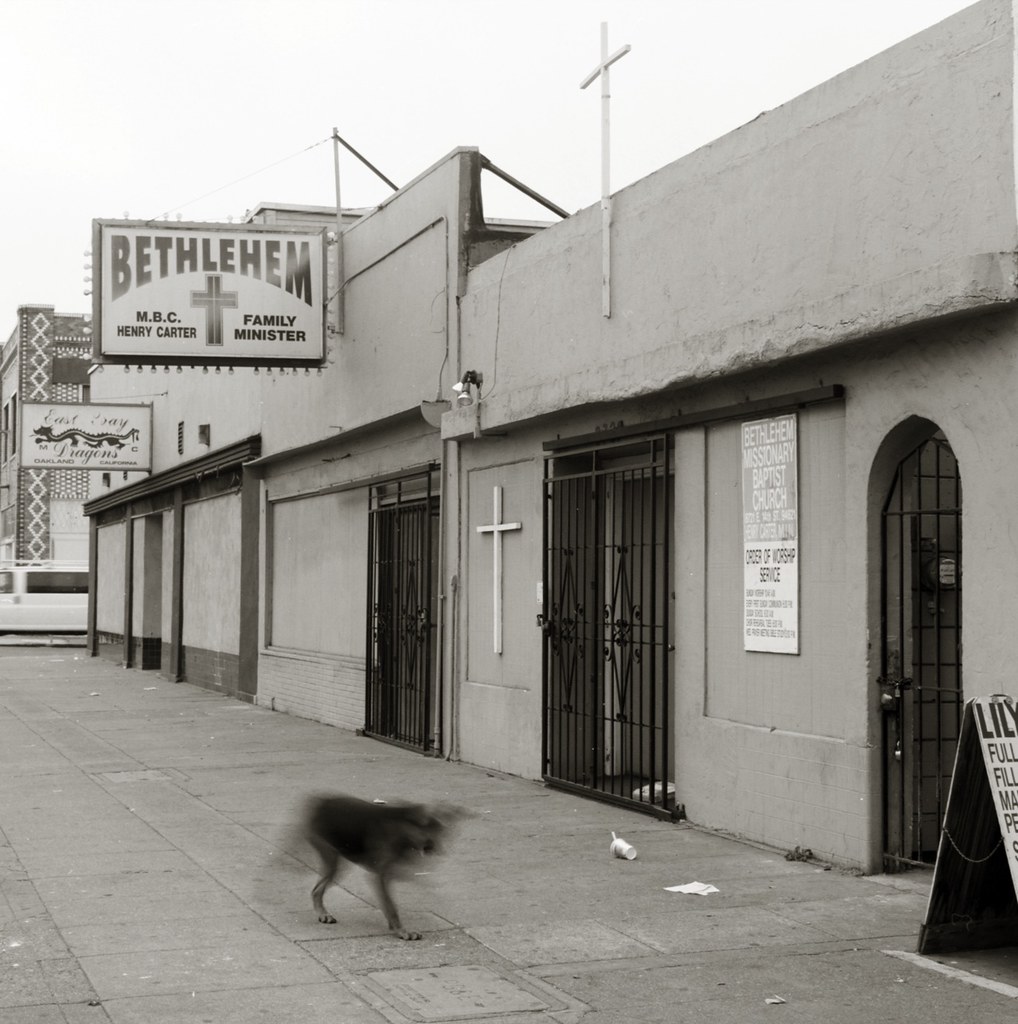
Bethlehem M.B.C. Church and passer-by (South Oakland): photo by efo, 11 October 2009



19 comments:
my friend Charlie Vermont says that
the Catholic girls who became poets
inculcated with the concept: the
word became flesh....would later
as they entered the world to do
what they could given its frequent
but not ubiquitous horrors would
use their beauty and passion and
classical education to bring poetry
into the world so that on many
occasions as in Beatrice and Dante,
the flesh became word and therein
lies a Sanctuary
I admire efo's optimism and his photography.
There are a lot of flavors. I'm always surprised when I meet anyone who seems to be trying to be positive and make a beneficial difference in other people's lives and isn't merely focused on trumpeting their own fantasies into a closed room.
Curtis
Efo's comment quoted here is a bit I snipped from an exchange he was having with a commenter at his photo blog several years back. The commenter was asking whether the intent in his project of photographing churches was purely cynical.
He has been at this survey for the better part of the decade and in the course of this and other shutterbugging expeditions has covered the bleaker grounds of the East Bay with more honesty and wit and compassion than any other photographer I know of.
Whenever I see pictures of places like this it depresses me.
Structures which were once store-fronts, turned into "places of worship" out of pragmatic necessity.
Have you ever attended a black Baptist church, Tom?
If you did, I doubt you felt as if you belonged. It's one of the cultural experiences that reminds us how different we are from each other--I mean as "races".
I've never been a churchgoer. My parents were secular pantheists, sort of. They disdained church-going, but had friends who attended regularly. I grew up believing religion was a crock. Still do, for the most part.
Is there anything beautiful about these places?
Elmo says to Efo...we both have
friends in lowly places and when you have friends in lowly places
you tend to feel there's a higher
power
Sorry about that, Curtis. When I look at smug well-stuffed white people coming out of expensive restaurants, I probably feel almost as depressed as you apparently feel when you gaze upon poverty.
Efo (who has a name, it's Eben) lives around here, as do you and I, Curtis. And I'd be surprised if any of us has done at one of these impromptu churches what the song once said -- "I stopped by a church/fell down on my knees and began to pray".
But not attending and not wanting to know are different matters.
Being depressed by the misery that surrounds those who struggle to live in the mean flatlands is a convenient luxury of those dyspeptic souls who live up on the hill.
The prior practical usefulness of the storefronts eludes me. What do you think, Starbuck's was going to drop 30K on a lease for one of those places?
I give the photographer credit for having the the nerve to make his way to, look at, and make a documentary record of these sites. I see them not as places of worship proper, more like aid stations for the desperate.
I don't know if "there's anything beautiful in these places", but I do believe these are beautiful photos Efo has made (beautiful because honest, brave, true), and that they have been made with respect. Wish I could say the same about your comment. To me it just sounds like the usual racist b.s.
Elmo, the way things are going I reckon we could use a few more Efos and a few more Elmos in this broke-down world, asap.
(And you can bring along your poetic friend Charlie Vermont, too.)
I'm surprised by the accusation of cynicism. There seems a devotion to a place of which these churches are an integral part.
I'd hsve to quote Uncle Karl here: "Religion is the sigh of the oppressed creature, the heart of a heartless world, and the soul of soulless conditions". Efo's response has something of that notion running through it.
I've had some church moments, to my surprise. Can be quite an extraordinary release. As one gets bitter and confused the idea of joining such a gathering and just believing in whatever fairy tale is being told for a moment seems steadily less appealing. Churches are like restaurants. It depends on who is doing the cooking whether the results are digestible, enjoyable, perhaps beneficial.
What a courageous and terrific undertaking by efo.
Elmo, my regards to Poet Vermont.
Harris Schiff
Muchas Gracias, Harris, Duncan y Tío Carlos.
Upon these palabras shall be founded the Tentative Tabernacle of Forlorn Hope.
dear wooden boy,when you get right
down to it Marx was a dolt and
his oversimplications have confused
many to the point of mass violence
Hey Elmo, the significantly undercredentialed philosophical commentator Carlos the Stuffed Jackal has suggested that the trick in reading Marx is indeed simple... in a way.
You've got to get the right book.
Tom:
Well, that didn't go well.
I don't think the point is whether or not the photographer did a good job, or whether he ought to have chosen better subject matter. That really wasn't what I was saying
Any artist chooses what to write and portray. We can't question that.
I was reacting to the bleakness and desperation of these places, which seems to me self-evident.
Your indignation, I assume, comes from a sympathy that we both share, but which expresses itself in different ways.
Personally, I don't think prayer requires a special building, but I don't question people's desire to do that.
Do such places inspire hope? Maybe, for some people, they do. Having grown up in poverty myself, and seen what purpose and function religion served in that condition, I don't.
Does that make me an insensitive racist?
Having actually been in places like this, I can speak with some clarity about it. Economic hardship isn't limited to race, creed or ethnic background.
I can get pretty indignant myself, when the occasion arises, but having spent 27 years of my life working for a social agency in SF, I do have some perspective on the question.
I enjoy your blog, and the many images you post there. My comments are never meant to subtract from the care and energy you put into it.
BTW, I don't think I'd want Starbucks to drop anything into East Oakland, or in my shopping district. They probably already have.
I never get coffee at Starbucks, which has terrible product and a CEO who eats middle America for breakfast.
a day at the races,comic genus
quite a bit more nimble than
a desk in the British Museum...
"from each according to his ability
to each according to his needs"
perhaps a code to live by but not
a creed upon which to compell a
society to organize...Hawthorne
and his communards in the Blithedale Romance (his daughter
started a convent in Georgia) or
as it was said in the 60's after
similar attempts...maybe we're not
just that evolved...but better to
trip the light fantastic than the
real Carlos the Jackal's ends justifies the means/Trivia question
with reward in some afterlife but
only available to those living near
the San Andreas fault: Which revolution worked the best?
Funny how values rise and fall on the floating currency exchange of ideas.
Curtis, I don't know what you think of as your neighborhood, but if it's Kensington, looks like you're indeed Starbucksless.
But a mile or so below the Circle there's a Starbucks on Solano at the corner where Ortman's Ice Cream used to be. The clock above the shop has been stuck on ten minutes to ten for the past twenty years. So when I get off the night bus in the rain at that corner, I always know what time it is.
Tom:
Another way of looking at these buildings is as a form of vernacular architecture.
I'm not being ironic here. A generation ago, Robert Venturi ("Living in Las Vegas" et al) proposed looking at home-grown facades and structural anomalies as truer representations of human intention than the officially admired classical designs that have dominated cities and towns for the last 600 years, at least. What he came up with was a semiology of indigenous forms that flew right in the face of the new design trends of the Modernist and Post-Modernist eras.
I don't know what it was like growing up in Chicago (I only visited Chicago once, for a week, and spent more time in Oak Park looking at Wright houses than south of La Salle), but for the generation of my parents (displaced Wisconsonians who came West during the War), fresh memories of the Depression sent them running away from hardship towards the prosperity of the Fifties. They'd had enough of scrimping, and wanted a piece of the "American Dream".
But they didn't find it, and we stood pat in "respectable" poverty while everyone around us was striving, trying to "keep up with the Joneses".
Is a Mormon temple in Salt Lake, or a Jewish temple in Philadelphia "prettier" or more dignified or more "inspired" than a converted street-front open congregation in Oakland? There are a number of arguments to be made in favor of each.
These issues, to my mind, are to some degree beside the question of the aesthetic values of the buildings themselves, though of course their purpose and meaning in situ isn't obviated by ignoring their respective social contexts.
There's no easy way to oversimplify these things by identifying with the downtrodden. Most religions have charitable elements in their mandates, but the world of churches reflects the same class distinctions seen in all societies.
Mies van der Rohe felt that the Modern "church" was really the factory, and his buildings were temples to technology.
Starbucks might prevail upon Nasai David to relinquish one of his properties on the Colusa Circle, unless the County permit board in Martinez were to raise a stink, claiming that the indigenous local traditions weren't being upheld. Everybody, and every institution, has its price.
Curtis,
I see the heavenward aspirational motive in traditional religious architecture as a matter of reaching symbolically upward and outward toward some higher power, whereas I would see the "street church" of the present day (again, as was the case in the 1930s) more as a place of refuge, a sanctuary, a shelter for the stricken; a place not to throw one's spirit up to the sky, but to lay down one's head, get warm, be fed & c. Whether or not either type of place actually serves the intended purpose wouldn't be up to me to say.
The set into which I came as an accidental person on this earth was strictly bounded by the culture and community of the Catholic Church, West Side Chicago branch, and its horizons and dispositions and suppositions became mine, for as long as I was stuck there. And then they weren't.
I don't suppose anybody's as powerful as Narsai David, surely not a mere county permit board, maybe not even a Starbucks. Yes, our indigenous traditions would be at stake, the ghost of Ishi grumbling into the acorn-mash-churning nook at Indian Rock.
Post a Comment